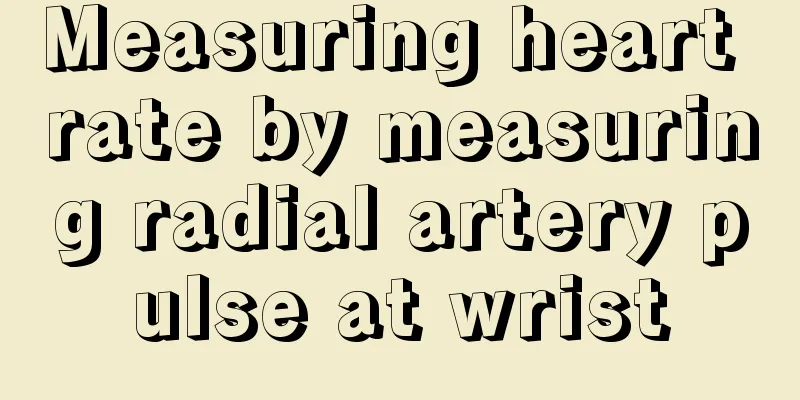Measuring heart rate by measuring radial artery pulse at wrist

|
We all know that many Chinese medicine practitioners usually feel the patient's pulse when treating the patient. For those older Chinese medicine practitioners, they can judge the patient's disease based on the regularity of the patient's pulse. Therefore, some heart rate measuring instruments will measure the heart rate through the radial artery pulse at the wrist. So what is the heart rate measurement through the radial artery pulse at the wrist? 1) Pulse rate is the number of pulse beats per minute, which is consistent with heart rate under normal circumstances. Heart Rate: refers to the number of times the heart beats per minute, based on the first sound. That is, the number of times the heart beats within a certain period of time, that is, how fast the heart beats within a certain period of time. 2) Use a stethoscope to listen directly to the precordial area to measure the heart rate, and use a pulse sensor at the radial artery at the wrist to measure the pulse. When the pulse is weak, one person listens to the heart rate and the other measures the pulse rate. Give the commands "start" and "stop", and two people start at the same time and measure for 1 minute. Recording method: heart rate/pulse rate.3) In a normal person, the pulse and heartbeat are consistent. When atrial fibrillation or frequent premature beats occur, the pulse rate is less than the heart rate. Special circumstances of neonatal pulse 1. Generally speaking, the speed of the pulse is related to age and gender. The younger you are, the faster your pulse is, and physical activity will also speed up your pulse. 2. Generally, for every 1°C increase in body temperature, the pulse rate will increase by 10-15 beats per minute. Therefore, in the absence of a thermometer, you can roughly determine how much the body temperature has risen by counting your pulse. 3. The number of pulse beats is affected by age and gender. Generally speaking, children's pulse is faster than adults, and women's pulse is faster than men. 4. When a child is feeding, having a fever, moving, crying, or being nervous, the pulse rate will increase slightly due to increased metabolism. The pulse rate will slow down by 10-20 beats when resting or sleeping. 5. The above normal pulse values are not absolute. Two children of similar age may have different physical fitness due to their different daily activities. The number of pulse beats may be different or even quite different, but they are both healthy. 6. When children are sleeping, their pulse may be slightly irregular due to the influence of breathing, which is a normal physiological phenomenon. |
<<: Photorejuvenation to remove red blood streaks
>>: 5 km 30 minutes heart rate 120
Recommend
How long can one live with advanced pancreatic cancer
How long can one live with advanced pancreatic ca...
Is acupuncture useful in treating myopia?
Myopia is a condition that is more common among p...
How to treat hyperlipidemia? Take a look at these related questions first
Hypertension is a common disease among many elder...
What is the best way to prevent liver cancer? Five lines of defense are the most solid to prevent liver cancer
Tumor treatment experts said that the onset of li...
How to quickly make dough without yeast
Some people don’t know how to make dough without ...
Is stomach cancer contagious if it spreads to the lungs in the late stage?
Gastric cancer will have a certain impact and har...
Broken capillaries in the eyes
Capillary rupture is very common in daily life. I...
What should I do if I get liver cancer and feel hungry?
As a malignant tumor of the digestive system, liv...
The efficacy of Angelica dahurica honey mask
Everyone likes to use some things to make homemad...
Melanoma of scalp
Scalp melanocytic nevus, like other moles, can ap...
Current methods for diagnosing endometrial cancer
What are the diagnoses for endometrial cancer? Th...
Is it okay to take anti-inflammatory drugs after taking glucose?
Glucose is familiar to everyone. It is a kind of ...
What is the best time to soak your feet?
For many people, foot soaking is a healthy lifest...
What should you pay attention to in your diet after you are diagnosed with liver cancer? Several principles should be followed in your diet for liver cancer
How should patients with liver cancer eat? Regard...
Four high-risk factors for lung cancer
Nowadays, the incidence and mortality of cancer i...









